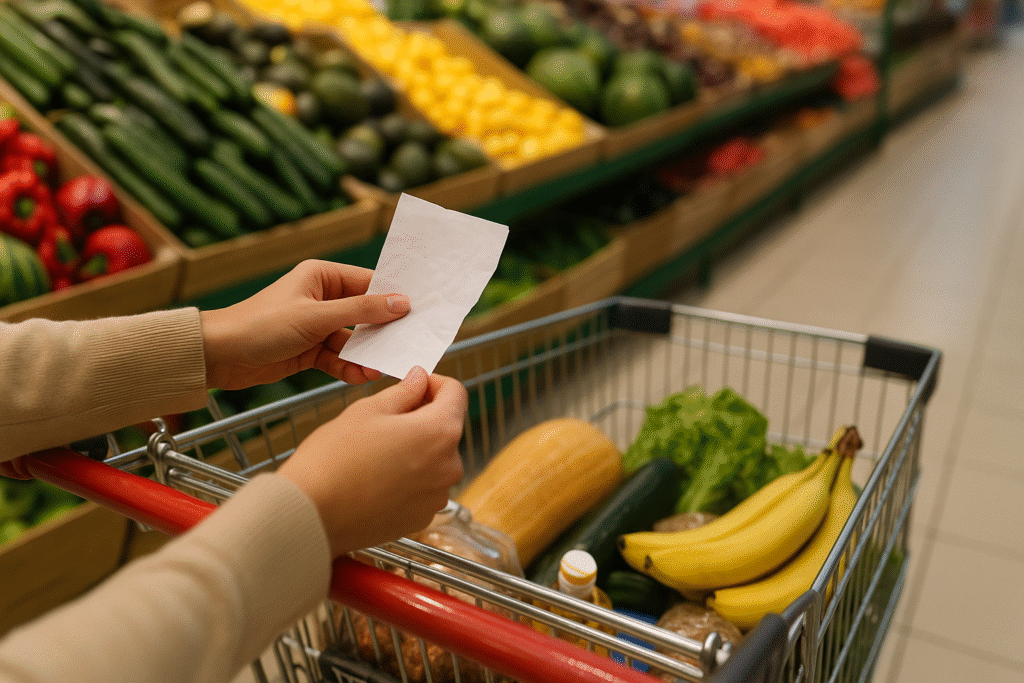How to apply for inflation proof grocery hacks

Grocery shopping has become increasingly challenging with rising inflation. Food prices are constantly going up, and often, wages can’t keep up. To avoid letting this reality put more pressure on your budget, it’s important to change the way you shop, plan more carefully, and adopt simple strategies that truly help save money.
If you want to learn how to protect your grocery shopping from inflation, check out these five practical tips and see exactly how to apply them in your daily routine.
1. Plan your meals and make a list before leaving the house
The first step to avoiding unnecessary expenses is knowing exactly what you need to buy. Going to the supermarket without a plan opens the door to impulse buying, which usually increases the total cost.
By planning your weekly meals, you can create a clear list and avoid buying duplicate products or items that will end up spoiling due to lack of use.
To apply this tip, simply think about the dishes you plan to prepare during the week and write down the necessary ingredients.
Then, check what you already have at home to avoid buying doubles. This way, your shopping trip becomes faster, more efficient, and more economical. Having a list in hand—on paper or on your phone—helps you stay focused and avoid distractions.
2. Prioritize seasonal and locally produced foods
An effective way to save money is to prioritize fruits, vegetables, and greens that are in season.
When a product is in peak season, production is higher and prices tend to be lower because transportation and storage costs are also reduced.
Moreover, seasonal products usually have better flavor, freshness, and nutritional value.
To put this tip into practice, it’s worth checking which foods are in season before heading out to shop. Some municipalities and agricultural websites provide monthly charts with seasonal produce.
At farmers’ markets, you can find these foods with better quality and more affordable prices. Buying local products also helps stimulate the regional economy and reduce environmental impact.
3. Buy in larger quantities when it makes sense
Another way to fight inflation is to take advantage of discounts by buying in bulk, especially for non-perishable products that you use frequently.
When bought in larger packages, items like rice, beans, oil, coffee, and cleaning products are cheaper per unit. However, it’s essential to know when this strategy is truly worthwhile.
Before buying in large quantities, consider whether you have enough storage space at home and whether you’ll actually use everything before it expires. You can also organize group purchases with friends or family to split costs.
Comparing the price per kilogram or liter is a practical way to determine whether the bulk option really saves money.
4. Take advantage of promotions consciously
Promotions can be great allies against inflation, as long as they’re evaluated carefully. Buying items just because they’re on sale, without need or planning, can lead to waste and extra spending.
That’s why it’s important to assess whether the discount is truly worthwhile and whether the product fits into your daily routine.
To apply this tip, you’ll need to be a bit more analytical. It’s recommended to follow weekly supermarket promotions, use discount apps, and pay attention to expiration dates.
Buying on sale only makes sense if you’ll use the product within its shelf life and if it’s already part of your usual shopping list. Otherwise, what looked like savings could turn into a loss.
5. Give store-brand products a chance
One of the most effective strategies to reduce your grocery bill is to replace well-known brands with more affordable alternatives, such as supermarket private labels.
These products usually cost significantly less and, in many cases, offer the same quality, as they’re produced by third-party suppliers under similar standards to the famous brands.
To apply this tip, start by testing budget-friendly versions of staple items such as milk, pasta, flour, cookies, and cleaning supplies.
Look at labels, ingredients, and the composition of products to make sure you’re making a fair switch. Often, the difference lies only in the packaging and marketing, not in the actual quality of the item.
Bonus tip: don’t shop when you’re hungry
It might seem insignificant, but this is one of the most effective ways to avoid unnecessary purchases.
When we’re hungry, we’re more likely to buy ready to eat, high calorie, or impulsive products, which can hurt both your wallet and your health. Eating something before heading to the store helps you stay focused and avoid food traps.
Conclusion
Protecting your grocery budget from inflation requires a few changes in habits. Better planning, choosing seasonal produce, taking advantage of promotions wisely, buying in bulk when appropriate, and trying cheaper brands are all simple actions that can make a big difference to your monthly spending. More than just saving money, these practices help you make more conscious decisions, reduce waste, and maintain a quality diet. On your next trip to the supermarket, try putting these strategies into practice and see the difference in your final bill.

